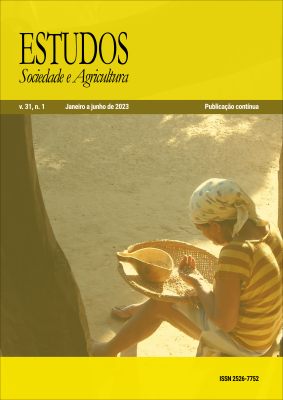Quilombola rurality and creating habitability in multispecies landscapes in the extreme north of Espírito Santo, Brazil
DOI:
https://doi.org/10.36920/esa31-2_04Keywords:
habitability, multispecies landscapes, quilombola communitiesAbstract
The article discusses the ways in which the quilombolas of Sapê do Norte, in the extreme north of Espírito Santo, Brazil, shaped multispecies landscapes in this region through a distinctive rurality based on shared inhabitation of land by community members, hunting, gathering, fishing, and a distinctive form of agriculture. These methods that shaped the landscapes in Sapê do Norte allowed the quilombola families to remain in this region and continue this way of life while also making it possible for other species to live in this area; for example, maintaining the forests, soils, and water cycle gave rise to new varieties of plants and animals.
Downloads
Downloads
Published
Issue
Section
License
Copyright (c) 2023 Gustavo Rovetta Pereira

This work is licensed under a Creative Commons Attribution 4.0 International License.
Authors who publish in this journal agree to the following terms:
a) Authors maintain the copyright and grant the journal the right of first publication, with the work simultaneously licensed under the Creative Commons Attribution License which allows the sharing of the work with acknowledgment of authorship and initial publication in this journal.
b) Authors are authorized to take additional contracts separately, for non-exclusive distribution of the version of the work published in this journal (eg publish in institutional repository or as a book chapter), with acknowledgment of authorship and initial publication in this journal.
c) Authors are allowed and encouraged to publish and distribute their work online (eg in institutional repositories or on their personal page) at any point before or during the editorial process, as this can generate productive changes, as well as increase the impact and citation of published work (See The Effect of Free Access).






